Grammar 📖
I made some grammar trees and a video about the sentence “The idea that wealth is important is true” from Peikoff’s Grammar course.
Trees: non-embedded link for downloading
the idea that wealth is important is true
I then discussed the trees and general issue with Elliot in the Fallible Ideas Discord channel #idea-trees and changed my perspective on the sentence somewhat. Here is a log.
Here is another tree just for fun (using another sentence from Peikoff’s Grammar course).Learning may be easy, if you are learning from a good teacher, but teaching is work.
Thinking About Problems 🤔 💬
Changing Time Priorities
I spend too much time on what I regard as lower value activities. I think this means I’m not actually convinced the stuff I spend time on is of lower value. There is a disagreement somewhere. What I’m not sure about is whether or not I actually value the stuff I spend time on more in some substantive way than the stuff I would rather be doing, or whether I am just procrastinating or something. I’m not sure how I would tell the difference. I guess one thing is that I don’t mind doing the lower value stuff I spend time on some. Like shopping online or whatever is fine in some amount. Cleaning and organizing is fine in some amount too. But when it starts to interfere with what seems like more important stuff, then I start to wonder about what is going on and the nature of my motivations.
One frequent issue that I have is that I lose focus on stuff that I think is more important that I am trying to accomplish. That is where I start shifting to doing more of the lower value stuff – the times when I lose focus. So one thing I could try is paying attention to what is happening when I lose focus, what is going on. Am I stuck in some way? If I am often losing focus when I feel stuck, then that is maybe an indicator that I am using the other activities as some sort of distraction from being frustrated with being stuck or something like that.
I’ve heavily criticized one particular time-sink and have been spending less time on that. So maybe what I am doing is compensating for that loss of a distraction by elevating other distractions. So what I’ll need to do is maybe criticize spending time on the other stuff as well, and criticize it as being something worth spending lots of time on. And maybe I should think of more general criticisms like — I wanna focus on X, and this is not X, so I shouldn’t be spending a lot of time on this right now. I think more general principled thoughts about time usage would be good, cuz if I keep just going from one distraction to the next then that will be an infinite game of whack-a-mole with no end and not much progress.
One specific thing I’ve found helps somewhat limit the issue is just to set assigned amounts of time for some task. This can even apply to taking a break. Like I can say “I’m going to take a break for 15 minutes now and just passively listen to music or a podcast or something” and not feel bad about it or worry about what I should be doing. That can help prevent stuff from dragging on and taking up a bunch of time, cuz I just do it, and then I can remember that I already consciously spent some time on it and that I wanted to get to some other stuff today.
🗣 Practicing Explaining Something Simple: How to Represent a Simple Sentence Tree Form Using MindNode
I will follow the following rules for representing sentences.
– Verbs are the root of their clauses. So they’ll go at the top, unless there’s a conjunction linking two clauses. Then the conjunction will go on top.
– Subjects, objects and complements go under the verb for the clause they’re a part of.
– Modifiers go under the thing they modify.
- Open up MindNode and open up a new MindNode file by going to File/New or hitting Cmd-N.
- Type your sentence in the root node of new your tree to keep it handy for reference.

- Hover your mouse over the root node of your tree until the + sign appears and click it.
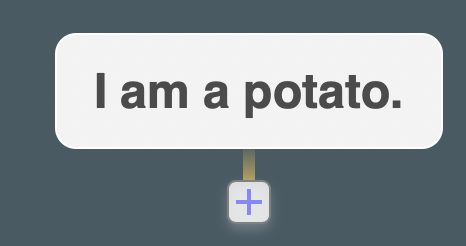
- The verb here is “am”, so we’ll make it the first thing we add to our tree.
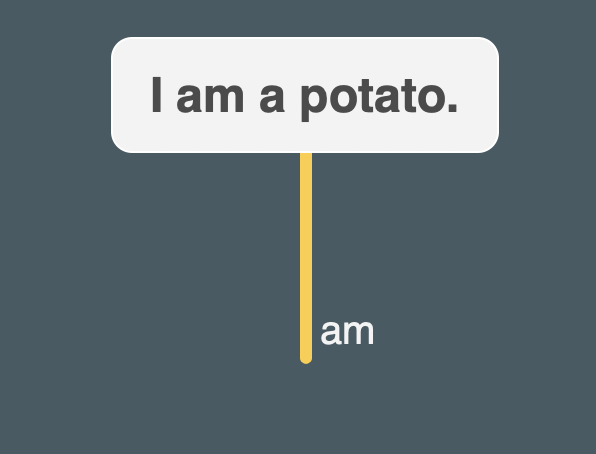
- You can now get a plus sign under the “am”. Click it to add a node for the subject “I” and type it in the node.
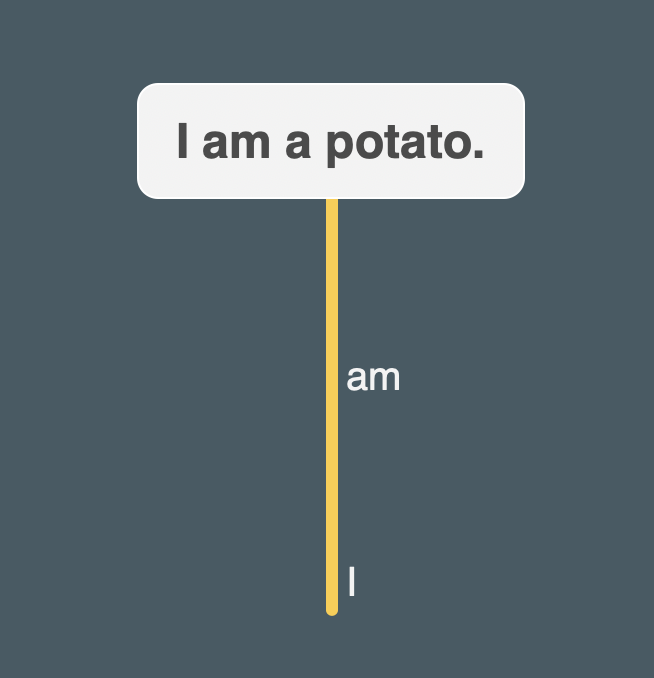
- Click the plus sign under “am” again to add a node for the complement “potato” and type it in the node.
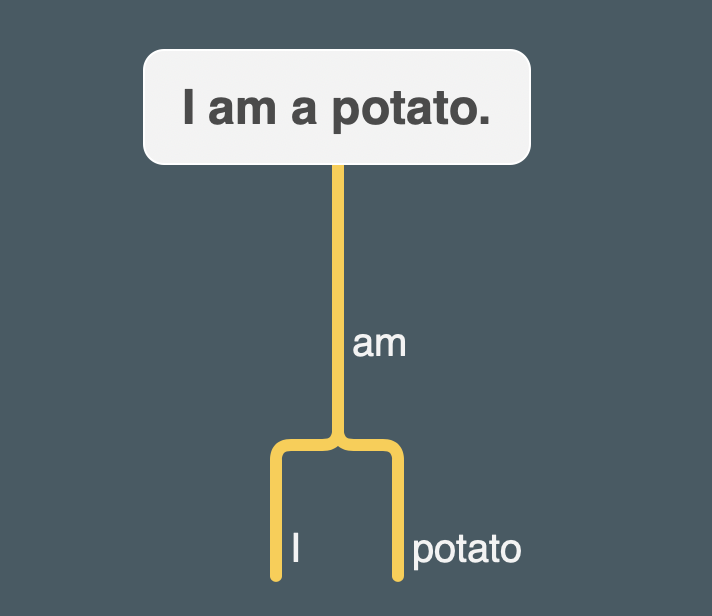
- Now click the plus sign under “potato” to add a node for the “a” and type it in the node.
- We made a tree!
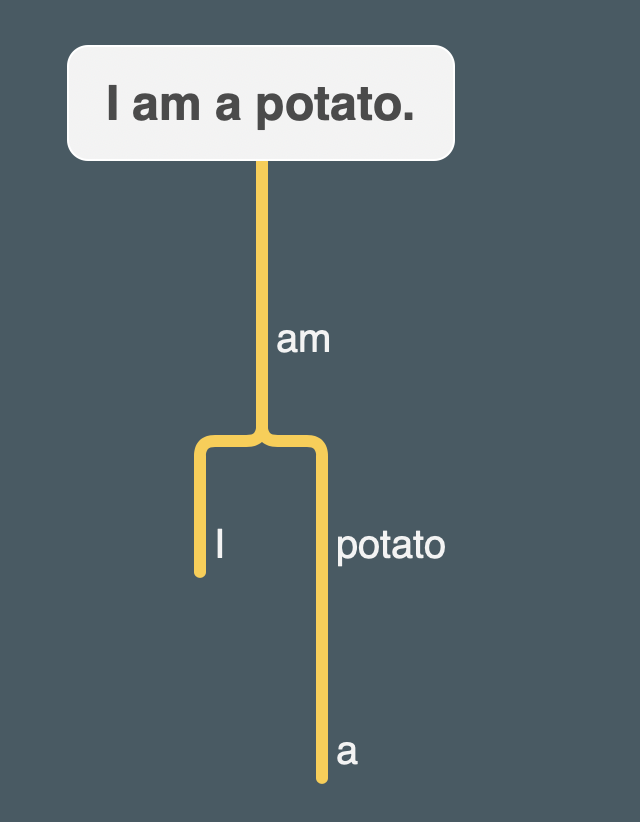
- Note that you can also add nodes using keyboard shortcuts. Return adds a child and Tab adds a sibling – you can see the whole list in the MindNode menu bar.

Activities
Technology
I started working through some tutorial videos and documentation for Docassemble, which is open source software that you can use to make interviews to generate documents. I intend to get through one page of documentation and one video fairly regularly.
🧠 🌩 Brainstorming: Things to Make Trees About
- Books
- Life decisions
- Political arguments
- Discussions
- Philosophical arguments
- Projects/project plans
- Clauses of a legal document
- Recipes